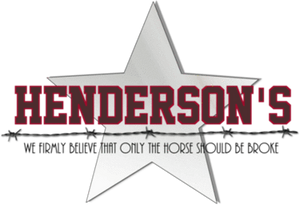The History of Barrel Racing
Barrel racing is typically a crowd favorite at the rodeo. This thrilling and high-speed rodeo event has its roots deeply embedded in the American West. Barrel racing combines skill, speed, and precision. Over the years, it has grown from a simple show class to a competitive sport known around the world.
Origins of Barrel Racing

The early 20th century is where barrel racing all began. The sport originated as a means to showcase the horsemanship skills of women in the rodeo circuit. In an era when women couldn’t compete in many sports, rodeos provided a rare platform for them to show off their riding skills. At first, these events were more like shows than races, focusing on elegance and the rider’s ability to move their horses gracefully.
Evolution of Barrel Racing
The original barrel racing pattern looks very different from today’s standard cloverleaf pattern. Early courses often featured a figure-eight or straight-line setup. As barrel racing became more popular, the cloverleaf pattern was chosen as the best format because it is complex and requires a lot of skill. The cloverleaf pattern has three barrels set up in a triangle. Riders must circle the barrels in a specific order before racing back to the finish line.
Women in Barrel Racing
Did you know women have always been at the forefront of barrel racing? The Women’s Professional Rodeo Association (WPRA), first called the Girls Rodeo Association (GRA), was founded in 1948.
The WPRA played a significant role in formalizing the sport and providing a platform for female rodeo athletes. This organization makes the rules for barrel racing. This helps keep competitions fair and consistent across the United States.
Professionalization and Growth
Barrel racing gained traction very quickly throughout the 1950s and 1960s. The WPRA was instrumental in this process. They promoted the sport, and by the 1970s, barrel racing had become a staple event in rodeo competitions nationwide.
Additionally, the founding of the National Finals Rodeo (NFR) in 1959 further boosted the sport’s visibility. The NFR added barrel racing that year, reaching a bigger audience and showing the athleticism and skill needed for the sport.
Training and Techniques
As barrel racing evolved through the years, so did the training techniques and breeding programs. Quarter Horses, known for their burst of speed and agility, became the breed of choice for many barrel racers. Training routines changed to improve the horse’s turning ability, speed control, and response to the rider’s signals.
Barrel Racing Today
Today, barrel racing remains a prominent event in rodeos around the world. Barrel racing still attracts many dedicated fans. Competitions range from local rodeos to national and international championships. The sport shows the strong bond between horse and rider, highlighting their teamwork, trust, and athleticism.
The history of barrel racing tells a story of perseverance, innovation, and the unbreakable spirit of the rodeo horse and rider. Barrel racing started as a simple show of horsemanship and has become a competitive and professional sport. It has earned a special place in the rodeo world. As the sport grows, the hard work of its early founders and today’s riders makes sure barrel racing stays exciting and loved for so many years.
